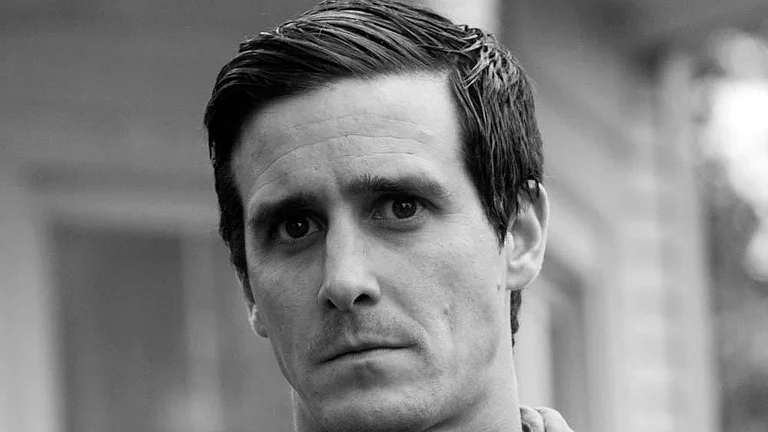Union Carbide India Limited (UCIL) was able to operate its deteriorating plant in Bhopal because industrial safety and environmental laws were not strictly enforced,'' says a case study prepared by the Harvard Law School, pinpointing certain causes that may have led to the biggest industrial tragedy the world has ever witnessed. Three thousand dead and 400,000 affected for life.
The story of similar neglect and dereliction of duty continues as about 700 tonnes of residue and chemical waste lies unprotected in the factory compound, with no efforts made towards safe disposal.
Fifteen years have passed since the chugging boilers and cooling towers that worked 24 hours-a-day came to a halt. For 15 years now, the formulation plantówhere the deadly methyl iso-cynate (mic) was usedóhas stood silent, reviled as the only visible target of the surviving victims' ire, as the most recognised face of the tragedy the world over, with its complex network of pipes and boilers distinguishable even in long shots. And yet today, one can't stand under it for 15 minutes and come away without itchy skin, burning eyes, headache and nausea. As far as UCIL is concerned, it has paid the $470 million it was supposed to, sold the factory to Eveready India Limited and now if it gives anyone a headache or lung cancer, it's their funeral. No one raised the question of waste disposal and management in '84 or before; so why now ?
A large quantity of the Sevin brand insecticideówhich is made with micówas stuck in a boiler when the plant had to be abruptly shut down at 11.30 on the night of December 2, 1984. The residue has now corroded the steel tank and spilled on to the ground. Another 21 tonnes of it lies in an open shed. Sevin, along with another brandname Temik, which also uses mic as a component, are classified as semi-volatile material by scientists. More than 650 tonnes of solidified semi-volatiles like alpha naphthol, heavy metals like chromium, lead, nickel, cadmium, zinc and manganese, inorganics like carbonates and chlorides and finished products like ortho-dichlorobenzene, carbon tetrachloride, methanol and mercury are haphazardly stored in a godown. The shed has a broken roof that allows rainwater to mix with the contents in the sacks, which then seeps into the ground.
One has only to scrape the rusting iron railings in the formulation plant and shiny droplets of mercury emerge. By one estimate, there was about 2.5 tonnes of mercury in use in '84. Of this, nearly a tonne is believed to have made its way into the public sewer system around the plant. The insecticides produced in the plant were so strong that they retain their effect even today. All the shrubbery, grass and trees in the sprawling 87-acre compound are completely pest-free. Pests dare not come even close to the two concrete waste disposal tanks that were used when the plant was functional. The tanks now contain a dark liquid which again has a high mercury content, but remarkably, unlike other stagnant pools of water, it has no dead insects. Thrice over last year, the shrubbery in the compound caught fire, with noxious smoke and fumes scaring away the residents of surrounding localities and forcing them to take shelter along the railway track.
The National Environment Engineering Research Institute, Nagpur, studied soil and water samples taken from the UCIL compound. Its findings are alarming. 'The entire area recorded a high concentration of semi-volatiles like Sevin and Lindane. The concentration of these was found to be higher at 60 cms depth than at 30 cms depth in the soil,'' its report says, establishing that residue has seeped into the soil and may have mixed with groundwater. Residents of Atal-Ayub Nagar and Arif Nagar slums, which abut the boundary wall, are condemned to drink contaminated water that reeks of pesticides.
The point is that if there is potentially hazardous waste lying around the compound, then whose responsibility is it to see to its disposal?
The primary responsibility lies with UCIL, which was derelict even when the plant was in operation. Between '69 and '77, there was no scientific disposal of toxic wastes at all. Between '77 and '84, a half-hearted attempt was made to dispose of the waste in three solar evaporation ponds. There was a clumsy attempt to protect the soil by first laying polythene sheets. These ponds were then covered over with concrete. But over 15 years, the soil has eroded around the concrete covers, allowing water in the ponds to become contaminated with the toxic material below and children bathe in it freely.
The secondary responsibility of waste disposal lies with the Centre. The central government came up with the Environment Protection Act only in '86, two years after the tragedy. A notification under Sections 6, 8 and 25 of the epaócalled the Hazardous Wastes (Management and Handling) Rulesówas issued only in '89. And the Madhya Pradesh government has shown a singular lack of understanding so far. 'We'll do something about it soon,'' assures chief minister Digvijay Singh. But as his executives point out, the state has a limited role. 'Under section 4 (1) of the Hazardous Wastes Rules, the occupier generating hazardous wastes is responsible for proper collection, reception, treatment, storage and disposal of waste,'' says a senior officer of the Gas Relief Department, fixing responsibility on UCIL. Curiously, state ministers like Arif Aqeel, who is in charge of the department, have tried to stonewall the issue. 'There is no harmful waste left after 15 years and whatever is lying around, its toxicity is long finished,'' avers Aqeel.
For now, Digvijay has directed his officers in the Gas Relief Department, which has taken over the possession of the factory, to collect the waste lying around and put it under one well-protected roof. What needs to be done is complete sampling and testing of the waste. Why it's not being done is anybody's guess. A negative result of such tests would fix more responsibility on UCIL and perhaps lead to fresh litigation for compensation. At the very least, UCIL may have to undertake the expensive responsibility of scientific disposal of the residue. After all, it didn't settle out of court for $470 million to be hounded for more money. Everyone in the know thinks it got a steal. Curiously, the man behind the decision, Chief Justice (retd) Ahmadi, now heads the Bhopal Memorial Trust that was established with UCIL funds with its head office in London. And, the 500-bed hospital in Bhopal? It's still to take off. Justice for all, right?


























